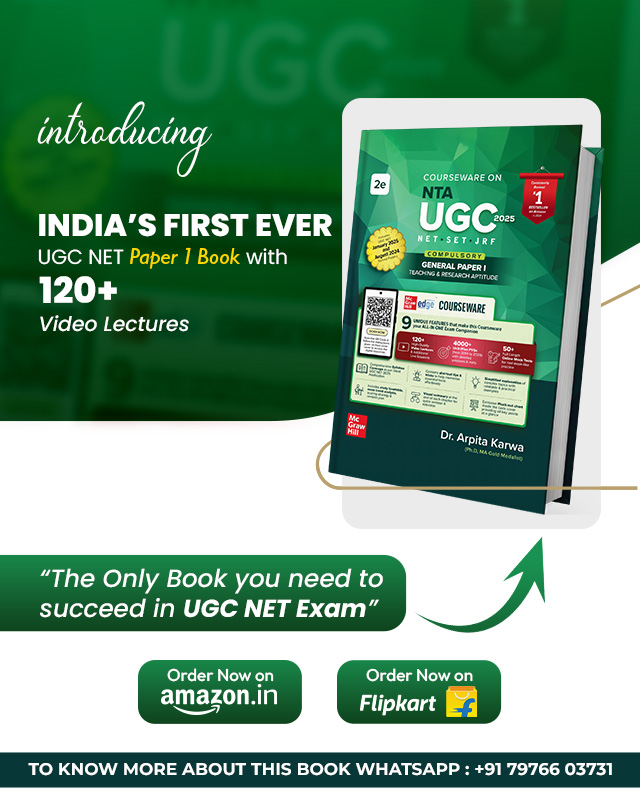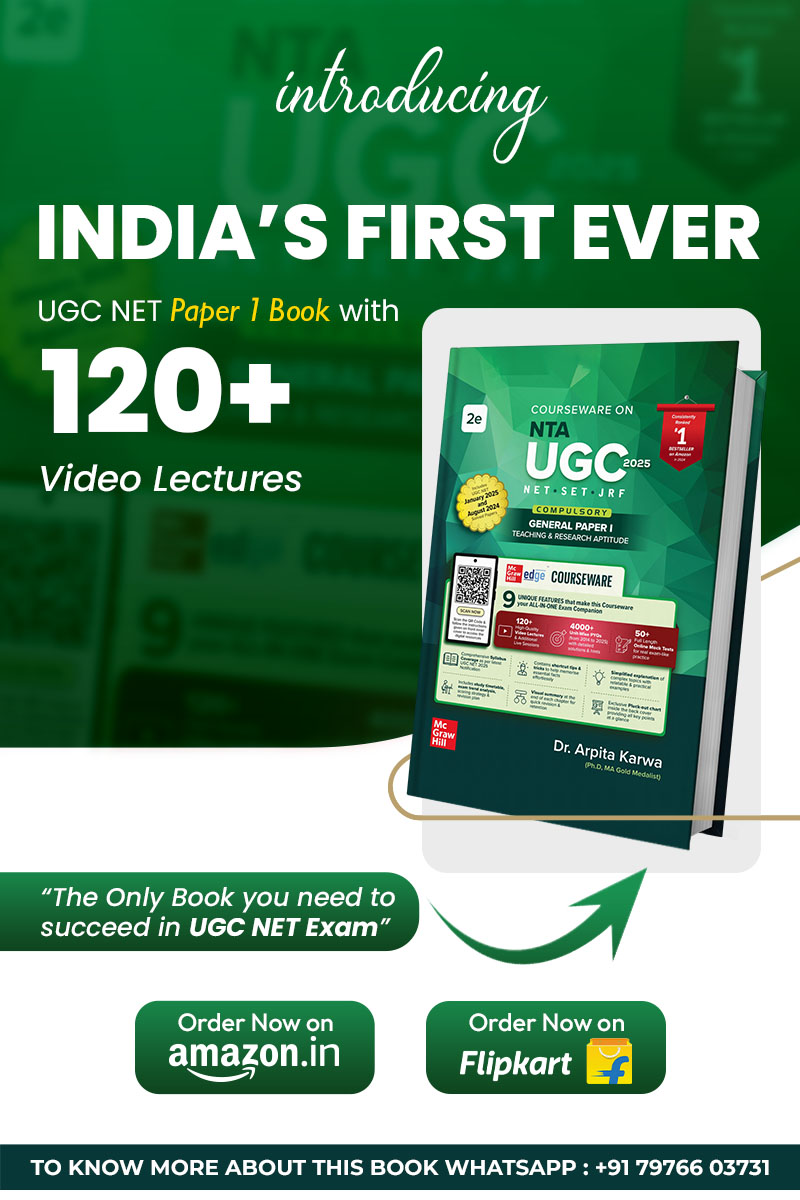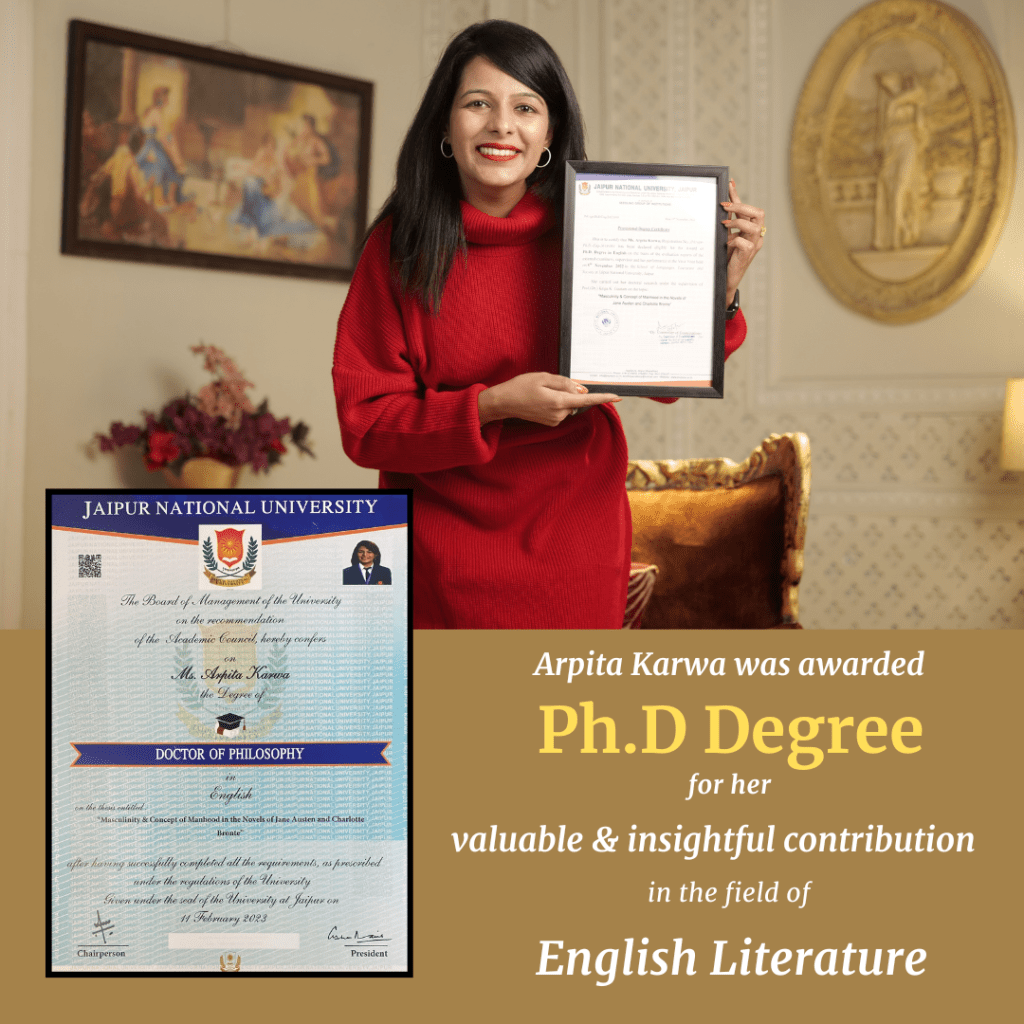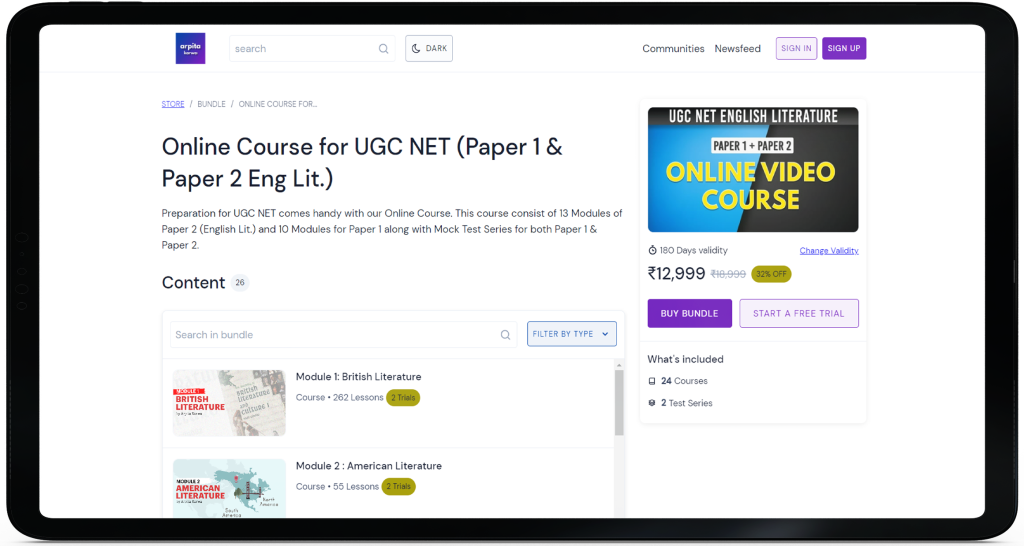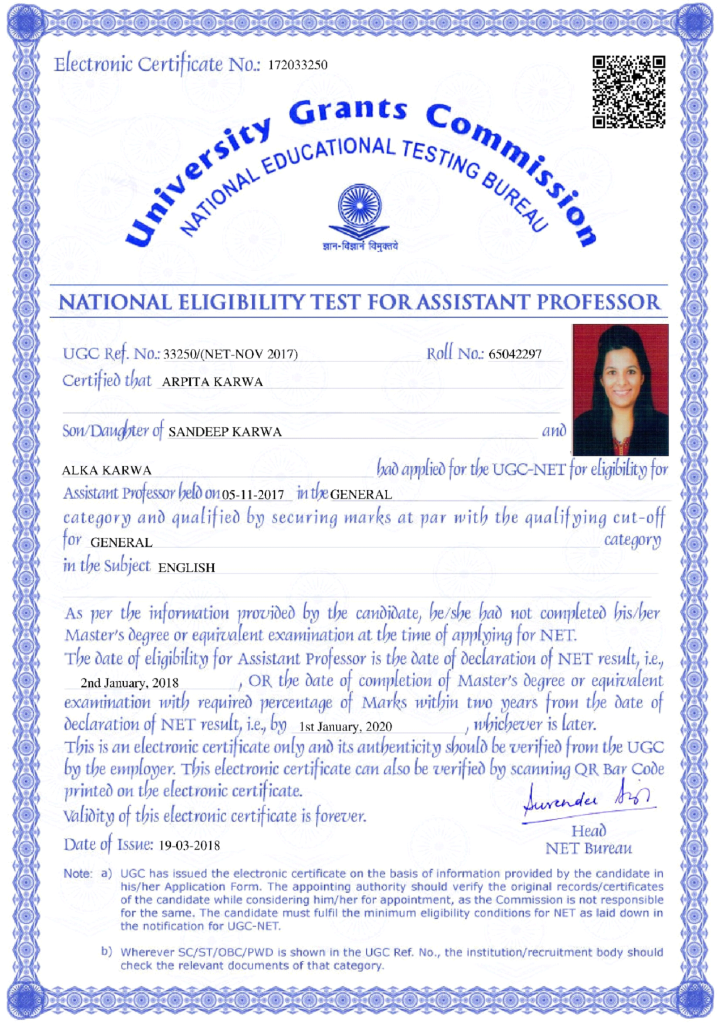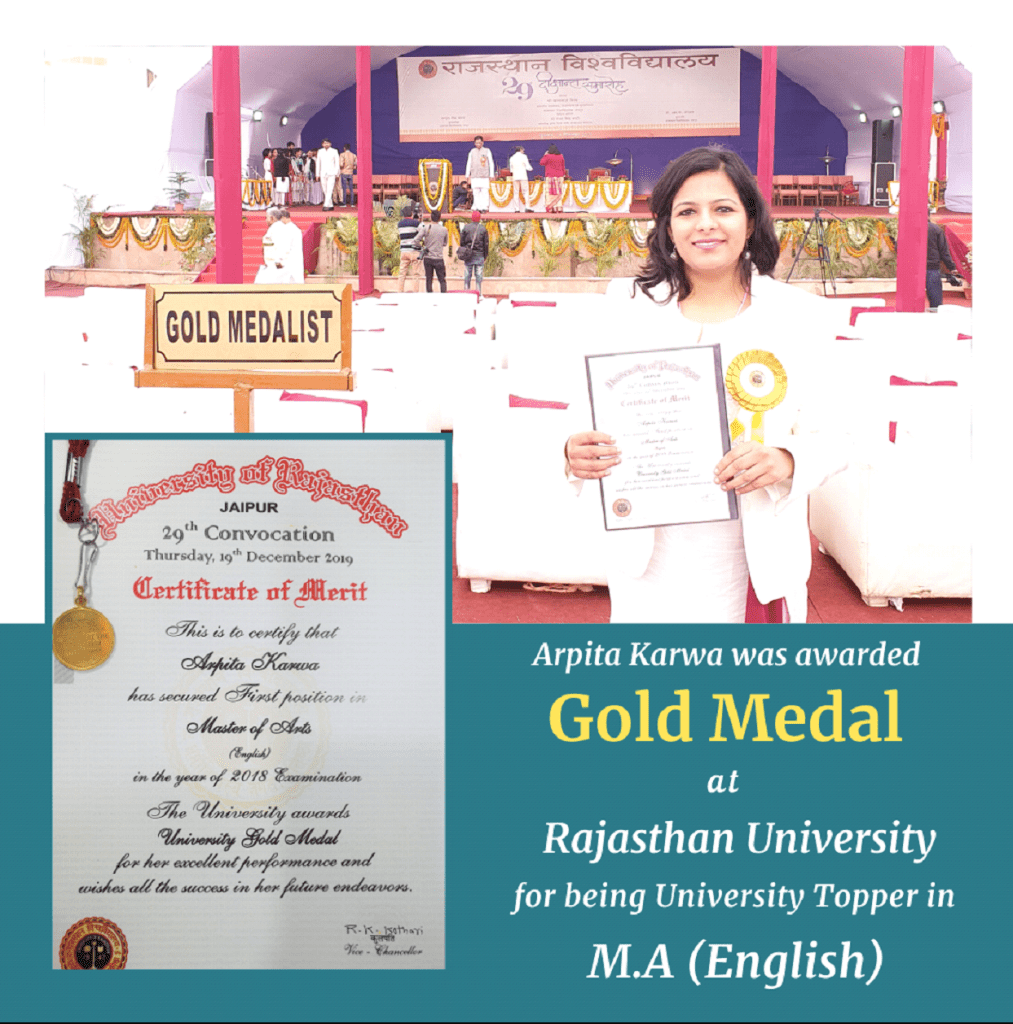CUCET M.A. ENGLISH, ENTRANCE EXAM 2020
June 19, 2023 2023-12-05 16:49CUCET M.A. ENGLISH, ENTRANCE EXAM 2020
CUCET M.A. English, Entrance Exam 2020
CUCET
M.A. ENGLISH, 2020
PART-A
Q.1) Select the most suitable synonym of the word DETER:
[1] Distract
[2] Suppress
[3] Discourage
[4] Contaminate
Answer: Discourage
Q.2) Choose the pair which exhibits the same relationship as CUBE: DICE:
[1] PAPER: THIN
[2] SPHERE: SUN
[3] CLOTH: WET
[4] MOUNTAIN: HEIGHT
Answer: SPHERE: SUN
Q.3) Select the correct word for following sentence: Most Chinese………….European first names to be their surnames.
[1] determine
[2] attempt
[3] feel
[4] assume
Answer: determine
Q.4) Life is related to Death in the same way Hope is related to:
[1] Sad
[2] Despair
[3] Pain
[4] Cry
Answer: Despair
Q.5) Identify the word which is opposite in meaning to TEMPORAL:
[1] Devious
[2] Immaculate
[3] Didactic
[4] Celestial
Answer: Celestial
Q.6) Choose the most appropriate set of prepositions for the blanks given in the sentence below:
……………. first, I found the work very tiring, but………. a few weeks I got used…….. it.4
[1] For, in, to
[2] At, in, to
[3] In, at, to
[4] At, into, to
Answer: At, in, to
Q.7) Select correct meaning of foreign expression prima facie:
[1] on first consideration
[2] a basis
[3] a record of events
[4] a simple purpose
Answer: on first consideration
Q.8) Identify the meaning of underlined word: The cosmetic preparations that are used for beautifying oneself have deleterious effects.
[1]Harmful
[2] Beneficial
[3] Lasting
[4] Tremendous
Answer: Harmful
Q.9) Identify the word which carries the meaning of following sentence: Voluntary relinquishing of something valued
[1] nihilism
[2] sabotage
[3] sacrifice
[4] scrimmage
Answer: sacrifice
Q.10) Identify the word which carries the meaning of underlined idiom: The cricket fans were in the dark till the disclosure to the CBI report.
[1] Innocent
[2] Ignorant
[3] Happy
[4] Unhappy
Answer: Ignorant
Q.11) The greatest possible length which can be used to measure 7 m, 3 m, 85 cm, and 12 m, 9 cm is:
[1] 15 cm
[2] 25 cm
[3] 35 cm
[4] 42 cm
Answer: 35 cm
Q.12) The total surface area of a cube is 96 cm2. What is its volume?
[1] 32 cm³
[2] 49 cm³
[3] 64 cm³
[4] 81 cm³
Answer: 64 cm³
Given, the total surface area of a cube = 96cm²
→ 6 (side)²= 96cm²
→ (side)²= 96/6= 16cm²
→ (side)²= (4) ² cm²
→ side= 4cm
Hence, its volume= (side)³
= (4) ³ cm³
= 64cm³
Q.13) The population of a town 2 years ago was 62,500. Due to migration to big cities, it decreases 4% per year. The present population of the town is:
[1] 56,700
[2] 57,600
[3] 58,800
[4] 60,000
Answer: 57,600
Population 2 years ago= 62500
Present population=P=?
Decrease in population= 4%
Present population= P= 62500(1- 4/100) ²
→ P= 62500 (1-1/25) ²
= 62500(24/25) ²
= 62500 x 576/625
= 100 x 576
= 57600
Q.14) Depreciation applicable to an equipment is 20%. The value of this after 3 years from now will be less by:
[1] 45%
[2] 48.8%
[3] 51.2%
[4] 60%
Answer: 48.8%
Here, the value of equipment after 3 years from now
= 100-100(1-20/100) ³
= 100-100(4/5)³
= 100-100 x 64/125
= 100- 256/5
= 100- 51.2
= 48.8%
Q.15) A sum of money is to be distributed among A, B, C, and D in the proportion of 5: 2:4 : 3. If C gets ₹1000 more than D, what will be the share of B?
[1] 500
[2] 1500
[3] 2000
[4] 2500
Answer: 2000
Q.16) Ashok and Binod can do a piece of work in 20 days; Binod and Chinku can do it in 15 days; and Chinku and Ashok can do it in 12 days. In how many days can Binod alone do it?
[1] 56
[2] 60
[3] 48
[4] 40
Answer: 60
(Ashok+ Binod)’s 1 day’s work = 1/20
(Binod+ Chinku)’s 1 day’s work= 1/15
(Chintu+ Ashok)’s 1day’s work= 1/12
2(Ashok+Binod+Chinku)’s 1day’s work
= 1/20 + 1/15 + 1/12
= 12/60
= 1/5
→ (Ashok+Binod+Chinku)’s 1 day’s work= 1/10
Binod’s 1 day’s work= 1/10 – 1/12
= 1/60
Hence, Binod alone can do it in 60 days.
Q.17) At what rate of compound interest per annum will a sum of ₹1200 become ₹1348.32 in two years?
[1] 6%
[2] 6.5%
[3] 7%
[4] 7.5%
Answer: 6%
Q.18) There is 60% increase in an amount in 6 years at simple interest. What will be the compound interest of ₹12000 after 3 years at the same rate?
[1] ₹ 2160
[2] ₹ 3120
[3] ₹6240
[4] ₹3972
Answer: ₹3972
Q.19) If all the numbers in 32741658 are arranged in ascending order from left to right, the position(s) of how many number(s) will remain unchanged?
[1] One
[2] Two
[3] Three
[4] Four
Answer: Four
Q.20) Complete the series: EAC, GCE, IEG, …
[1] JGI
[2] KGI
[3] KGH
[4] LGI
Answer: KGI
Q.21) The Jnanpith Award is related to which of the following fields?
[1] Literature
[2] History
[3] Dance
[4] Theatre
Answer: Literature – Jnanpith Award, highest literary award in India, given annually for the best creative literary writing to writers in any of the 22 “scheduled languages” recognized in the Indian Constitution. The prize carries a cash award, a citation, and a bronze replica of Vagdevi (Saraswati), the goddess of learning. It is sponsored by the cultural organization Bharatiya Jnanpith.
The Jnanpith Award was instituted in 1961, and the first award was given in 1965. Until 1982 it was presented for a specific work; thereafter, it was given for a writer’s overall contribution to literature. Since then, the award has typically been given every year to one author, although in some years it has been jointly offered to two.Q.22) Which of the following States has the largest forest cover in the country?
[1] Madhya Pradesh
[2] Arunachal Pradesh
[3] West Bengal
[4] Andhra Pradesh
Answer: Madhya Pradesh- Area-wise Madhya Pradesh has the largest forest cover in the country followed by Arunachal Pradesh, Chhattisgarh, Odisha and Maharashtra. In terms of band forest cover as percentage of total geographical area, the top five States are Mizoram (84.53%), Arunachal Pradesh (79.33%), Meghalaya (76.00%), Manipur (74.34%) and Nagaland (73.90%).
17 States/UT’s have above 33 percent of the geographical area under forest cover. Out of these states and UT’s, five states/UTs namely Lakshadweep, Mizoram, Andaman & Nicobar Islands, Arunachal Pradesh and Meghalaya have more than 75 percent forest cover while 12 States/UTs namely Manipur, Nagaland, Tripura, Goa, Kerala, Sikkim, Uttarakhand, Chhattisgarh, Dadra & Nagar Haveli and Daman & Diu, Assam, Odisha, have forest cover between 33 per cent to 75 per cent.Q.23) Which of the following is the birth place of Gautam Buddha?
[1]Kushinagar
[2] Lumbini
[3] Sarnath
[4] Gaya
Answer: Lumbini – The Lord Buddha was born in 623 BC in the sacred area of Lumbini located in the Terai plains of southern Nepal, testified by the inscription on the pillar erected by the Mauryan Emperor Asoka in 249 BC. Lumbini is one of the holiest places of one of the world’s great religions, and its remains contain important evidence about the nature of Buddhist pilgrimage centres from as early as the 3rd century BC.
Q.24) The theme of the National Science Day 2020 is:
[1] Climate change
[2] Technology and modern life
[3] Women in science
[4] The future is accessible
Answer: Women in science – National Science Day is observed on 28 February to commemorate the discovery of the ‘Raman Effect’. In 1986, the Government of India designated 28 February as National Science Day (NSD). On this Day, Sir Chandrasekhara Venkata Raman, also known as CV Raman announced the discovery of the ‘Raman Effect’ for which he was awarded the Nobel Prize in 1930.
The theme of National Science Day 2020 “Women in Science.” The theme of National Science Day 2019 “Science for the People and the People for Science,” The theme of National Science Day 2018 “Science and Technology for a Sustainable Future.”Q.25) The watershed between India and Myanmar is formed by the:
[1] Garo hills
[2] Naga hills
[3]Jaintia hills
[4] Khasi hills
Answer: Naga hills – The Naga hills form the watershed between India and Myanmar. The hills reach a height of 12,459 ft above sea level. They are part of a complex mountain range in Nagaland and the Burmese Naga self-administered zone.
The highest peak of the Naga hills is Mount Saramati. The parent range of Mount Saramati is the Purvanchal range. The important landmark is the Thanamir village which is famous for apples. The Naga hills were previously a part of Assam and after the partition, it became a part of Nagaland which was newly created. The complex structure of the Naga hills provides a natural barricade between the two countries.PART-B
Q.26) Which among the following texts is least about Gandhian thought?
[1] Untouchable
[2] Kanthapura
[3] Waiting for the Mahatma
[4] The Serpent and the Rope
Answer: Untouchable
Q.27) Identify the text that describes India’s transition from British Colonialism to independence accompanied by the partition of India.
[1]Anandamath
[2] In an Antique Land
[3] A Suitable Boy
[4] Midnight’s Children
Answer: Midnight’s Children
Q.28) Match the following:
List I
(a) Sonnets
(b) Astrophel and Stella
(c) Amoretti
(d) Sonnets from the Portuguese
List II
(i) Barrett Browning
(ii) Spenser
(iii) Shakespeare
(iv) Sidney
[1]a-iii, b-iv, c-i, d-ii
[2] a-iv, b-iii, c-i, d-ii
[3] a-i, b-iv, c-ii, d-iii
[4] a-iii, b-iv, c-ii, d-i
Answer: a-i, b-iv, c-ii, d-iii
Q.29) What is the name of the theatre in which Shakespeare had a significant share?
[1] The Theatre
[2] The Swan
[3] The Globe
[4] The Rose
Answer: The Globe Theatre was a theatre in London associated with William Shakespeare. It was built in 1599 by playing company, the Lord Chamberlain’s Men, on land owned by Thomas Brend and inherited by his son, Nicholas Brend and grandson Sir Matthew Brend, and was destroyed by fire on 29 June, 1613. A second Globe Theatre was built on the same site by June 1614 and closed by an Ordinance issued on 6 September, 1642.
Q.30) What Shakespeare play has as its basis for the film She’s the Man?
[1] A Midsummer Night’s Dream
[2] As You Like it
[3] Twelfth Night
[4] Much Ado About Nothing
Answer: Twelfth Night – She’s the Man is a 2006 American romantic comedy teen sports film directed by Andy Fickman and starring Amanda Bynes, Channing Tatum, Laura Ramsey, Vinnie Jones, and David Cross. Inspired by William Shakespeare’s play Twelfth Night, the film centers on teenager Viola Hastings, who enters her brother’s new boarding school, Illyria Prep, in his place and pretends to be a boy in order to play on the boys’ soccer team.
Q.31) Which among the following is the earliest known language spoken in the British Isles?
[1] Anglo-Saxon
[2] Scandinavian
[3] Celtic
[4]Jutlandic or Jutish
Answer: Celtic – Celtic languages, also spelled Keltic, branch of the Indo-European language family, spoken throughout much of Western Europe in Roman and pre-Roman times and currently known chiefly in the British Isles and in the Brittany peninsula of northwestern France. On both geographic and chronological grounds, the languages fall into two divisions, usually known as Continental Celtic and Insular Celtic.
Q.32) Name the co-founder and chief editor of the well- known encyclopedia (Encyclopedia) that played a key role in the dawn of enlightenment:
[1] Denis Diderot
[2] Voltaire
[3] Montesquieu
[4] Adam Smith
Answer: Denis Diderot (1713-1784) was a French philosopher, art critic, and writer, best known for serving as co- founder, chief editor, and contributor to the Encyclopedia along with Jean le Rond d’Alembert. He was a prominent figure during the Age of Enlightenment.
Diderot initially studied philosophy at a Jesuit college, then considered working in the church clergy before briefly studying law. When he decided to become a writer in 1734, his father disowned him. He lived a bohemian existence for the next decade. In the 1740s he wrote many of his best-known works in both fiction and non-fiction, including the 1748 novel The Indiscreet Jewels. In 1751, Diderot co-created the Encyclopedia with Jean le Rond d’Alembert. It was the first encyclopedia to include contributions from many named contributors and the first to describe the mechanical arts. Its secular tone, which included articles skeptical about Biblical miracles, angered both religious and government authorities; in 1758 it was banned by the Catholic Church and in 1759 the French government banned it as well, although this ban was not strictly enforced. Many of the initial contributors to the Encyclopedia left the project as a result of its controversies and some were even jailed. D’Alembert left in 1759, making Diderot the sole editor. Diderot also became the main contributor, writing around 7,000 articles. He continued working on the project until 1765. He was increasingly despondent about the Encyclopedia by the end of his involvement in it and felt that the entire project might have been a waste. Nevertheless, the Encyclopedia is considered one of the forerunners of the French Revolution.Q.33) Name the process of word-formation in which a part of a word is combined with the part of another word (e.g., brunch = breakfast and lunch):
[1] Compounding
[2] Portmanteau
[3] Syncopation
[4] Clipping
Answer: Compounding
Q.34) Name the great English lexicographer to come up with a landmark dictionary of English in 1755:
[1] Samuel Johnson
[2] Joshua Reynolds
[3] Tobias Smollett
[4] Edmund Burke
Answer: Samuel Johnson’s Dictionary of the English Language is one of the most famous dictionaries in history. First published in 1755, the dictionary took just over eight years to compile, required six helpers and listed 40,000 words. Each word was defined in detail, the definitions illustrated with quotations covering every branch of learning. It was a huge scholarly achievement, a more extensive and complex dictionary than any of its predecessors- the comparable French Dictionnaire had taken 55 years to compile and required the dedication of 40 scholars.
Q.35) The features of what movement of the philosophy of literature are shared by the following four writers: Honore de Balzac, Stendhal, Gustav Flaubert and Emile Zola?
[1] Realism
[2] Romanticism
[3] Aestheticism
[4] Symbolism
Answer: Realism
Q.36) Match the following:
List I
(a) Coleridge
(b) Robert Browning
(c) W. Wordsworth
(d) Shelley
List II
(i) The Cenci, A tragedy in Five Acts
(ii) Remorse
(iii) Pippa Passes
(iv) The Borderers
[1] a-ii, b-iii, c-iv, d-i
[2] a-iii, b-iv, c-i, d-ii
[3] a-i, b-iv, c-ii, d-iii
[4] a-i, b-ii, c-iv, d-iii
Answer: a-ii, b-iii, c-iv, d-i
Q.37) Who among the following was not an early editor of Shakespeare plays?
[1] Nicholas Rowe
[2] John Dryden
[3] Alexander Pope
[4] Lewis Theobald
Answer: John Dryden
Q.38) Who among the following postulated a common ancestry of Sanskrit, Latin and Greek, which promoted the development of comparative linguistics?
[1] Charles Wilkins
[2] William Jones
[3] A.K. Coomaraswamy
[4] Max Muller
Answer: William Jones
Q.39) Who wrote the Introduction to the first English translation of the Bhagvat Gita by Charles Wilkins.
[1] Warren Hastings
[2] William Jones
[3] Max Muller
[4] Lord Wellesley
Answer: Warren Hastings – In 1785, the Bhagavad Gita was first translated into English by Charles Wilkins and published as “Bhagvat-geeta or Dialogues of Kreeshna and Arjoon” by the British East India Company with an introduction by Lord Warren Hastings, the first British Governor-General of India.
Q.40) “Somewhere in la Mancha, in a place whose name I do not care to remember, a gentleman lived not long ago, one of those who has a lance and ancient shield on a shelf and keeps a skinny nag and a greyhound for racing”. Identify the novel that begins with the sentence.
[1] War and Peace
[2] Don Quixote
[3] Crime and Punishment
[4] Madame Bovary
Answer: Don Quixote
Q.41) Name the compilers of the First Folio of Shakespeare’s plays:
[1] Webster and Fletcher
[2] Pope and Dryden
[3]Heminges and Condell
[4]Herringmand and Brewster
Answer: Heminges and Condell – Mr. William Shakespeare’s Comedies, Histories, & Tragedies is a collection of plays by William Shakespeare, commonly referred to by modern scholars as the First Folio, published in 1623, about seven years after Shakespeare’s death. It is considered one of the most influential books ever published.
Printed in folio format and containing 36 plays, it was prepared by Shakespeare’s colleagues John Heminges and Henry Condell. It was dedicated to the “incomparable pair of brethren” William Herbert, 3rd Earl of Pembroke and his brother Philip Herbert, Earl of Montgomery (later 4th Earl of Pembroke).Q.42) When was the (English) East India Company established?
[1] 1588
[2] 1603
[3] 1625
[4] 1600
Answer: 1600 – East India Company, also called English East India Company, formed for the exploitation of trade with East and Southeast Asia and India, incorporated by royal charter on December 31, 1600. Starting as a monopolistic trading body, the company became involved in politics and acted as an agent of British imperialism in India from the early 18th century to the mid-19th century. In addition, the activities of the company in China in the 19th century served as a catalyst for the expansion of British influence there.
The company was formed to share in the East Indian spice trade. That trade had been a monopoly of Spain. and Portugal until the defeat of the Spanish Armada (1588) by England gave the English the chance to ee break the monopoly. Until 1612 the company. conducted separate voyages, separately subscribed. There were temporary joint stocks until 1657, when a permanent joint stock was raised.
Q.43) “Of man’s first disobedience and the fruit of that forbidden tree, whose mortal taste Brought death into the world, and all our woe”. Identify the opening lines of a well-known text.
[1] Hamlet
[2] King Lear
[3] Faery Queen
[4] Paradise Lost
Answer: Paradise Lost – “Of man’s first disobedience, and the fruit
Of that forbidden tree, whose mortal taste Brought death into the world, and all our woe, With loss of eden, till one greater man Restore us, and regain the blissful Seat, sing heav’nly muse, that on the secret top Of oreb, or of sinai, didst inspire That shepherd, who first taught the chosen Seed, In the beginning how the heav’ns and earth Rose out of chaos: Or if sion hill Delight thee more, and siloa’s brook that flow’d Fast by the Oracle of God; I thence Invoke thy aid to my advent’rous song, That with no middle flight intends to soar Above th’ Aonian Mount, while it pursues Things unattempted yet in prose or rhyme.” With these lines, Milton begins Paradise Lost and lays the groundwork for his project, presenting his purpose, subject, aspirations, and need for heavenly guidance. He states that his subject will be the disobedience of Adam and Eve, whose sin allows death and pain into the world. He invokes his muse, whom he identifies as the Holy Spirit. He asserts his hopes that his epic poem will surpass the other great epic poems written before, as he claims that his story is the most original and the most virtuous. He also asks his muse to fill his mind with divine knowledge so that he can share this knowledge with his readers. Finally, he hopes this knowledge and guidance from his muse will allow him to claim authority without committing any heresies, as he attempts to explain God’s reasoning and his overall plan for humankind.Q.44) Who among the following is believed to have written a series of Arthurian romances from prison?
[1] John Bunyan
[2] William Langland
[3] Thomas Malory
[4] Geoffrey Chaucer
Answer: Thomas Malory, in full Sir Thomas Malory, (flourished c. 1470), English writer whose identity remains uncertain but whose name is famous as that of the author of Le Morte Darthur, the first prose account in English of the rise and fall of the legendary king Arthur and the fellowship of the Round Table.
Even in the 16th century Malory’s identity was unknown, although there was a tradition that he was a Welshman. In the colophon to Le Morte Darthur the author, calling himself “Syr Thomas Maleoreknyght,” says that he finished the work in the ninth year of the reign of Edward IV (1469-1470) and adds a prayer for “good delyueraunce” from prison. The only known knight at this time with a name like Maleore was Malory of Newbold Revell in the parish of Monks Kirby, Warwickshire. This Malory was jailed on various occasions during the period 1450-60, but it is not recorded that he was in prison about 1470, when the colophon was written.Q.45) In Sir Gawain and the Green Knight, Gawain engages in a swap game with his host. And accordingly, Gawain receives three kisses and an enchanted belt from his host’s wife. Out of these, what does he return to the host from what he received?
[1] The enchanted belt
[2] Three kisses
[3] Two kisses
[4] One kiss
Answer: Three kisses
Q.46) Which is dialect from which Modern English is considered to have evolved?
[1] East Midland
[2] Northern
[3] Kentish
[4] Southern
Answer: Northern
Q.47) Who among the following accused John Donne of perplexing “the mind of fair sex with nice speculations of philosophy”?
[1] John Dryden
[2] Samuel Johnson
[3] Alexander Pope
[4] Ben Jonson
Answer: John Dryden
Q.48) Name the Indian novel that describes the change of its protagonist, Raju, from a humdrum tour escort to a renowned Holy Guru.
[1] The English Teacher
[2] Swami and Friends
[3] Reluctant Guru
[4] The Guide
Answer: The Guide
Q.49) “Had we but world enough and time, This coyness, lady, were no crime. ………………………… But at my back I always hear Time’s winged chariot hurrying near”,
What is the category of the typical philosophical outlook that the above lines represent?
[1] Pastoral Poem
[2] Satire
[3] Carpe Diem
[4] Elegy
Answer: Carpe Diem
Q.50) Name the Shakespeare play that has been adapted for the 1999 film 10 Things I Hate about You.
[1] The Tempest
[2] Othello
[3] Measure for Measure
[4] The Taming of the Shrew
Answer: The Taming of the Shrew – ’10 Things I Hate About You’ is a 1999 American romantic comedy film directed by Gil Junger and starring Julia Stiles, Heath Ledger, Joseph Gordon- Levitt, and Larisa Oleynik. The screenplay, written by Karen McCullah Lutz and Kirsten Smith, is a modernization of William Shakespeare’s late-16th- century comedy The Taming of the Shrew, retold in a late-1990s American high school setting. In the story, new student Cameron (Gordon-Levitt) is smitten with Bianca (Oleynik) and, in order to get around her father’s strict rules on dating, attempts to get bad boy Patrick (Ledger) to date Bianca’s ill-tempered sister, Kat (Stiles). The film is named after a poem written by Kat about her bittersweet romance with Patrick. Much of the filming took place in the Seattle metropolitan area, with many scenes shot at Stadium High School in Tacoma.
Q.51) Name the poem, the composition of which was interrupted by “The Person from Porlock”?
[1] “Rime of the Ancient Mariner”
[2] “Christabel”
[3] “Kubla Khan”
[4] “Dejection: An Ode” – The Person from Porlock was an unwelcome visitor to Samuel Taylor Coleridge during his composition of the poem Kubla Khan in 1797. Coleridge claimed to have perceived the entire course of the poem in a dream (possibly an opium-induced haze), but was interrupted by this visitor from Porlock while in the process of writing it. Kubla Khan, only 54 lines long, was never completed. Thus “Person from Porlock”, “man from Porlock”, or just “Porlock” are literary allusions to unwanted intruders who disrupt inspired creativity.
Q.52) Name the text with the subtitle Counsels: Civil and Moral.
[1] Essays of Elia
[2] Bacon’s Essays
[3] Montaigne Essays
[4] Hazlitt’s Selected Essays
Answer: Bacon’s Essays
Q.53) Arrange the following chronologically:
(a) Glorious Revolution
(b) English Civil War
(c) Jacobean Age
(d) Restoration
[1] (c), (b), (d), (a)
[2] (c), (d), (b), (a)
[3] (c), (b), (a), (d)
[4] (b), (a), (d), (c)
Answer: (c), (b), (d), (a)
Q.54) Who fought the English Civil War?
[1] English and Scottish political establishment
[2] Puritans and Parliamentarians
[3] Royalists and the members of the Church of England
[4] Parliamentarians and Royalists
Answer: Parliamentarians and Royalists – English Civil Wars, also called Great Rebellion, (1642- 51), fighting that took place in the British Isles between supporters of the monarchy of Charles I (and his son and successor, Charles II) and opposing groups in each of Charles’s kingdoms, including Parliamentarians in England, Covenanters in Scotland, and Confederates in Ireland. The English Civil Wars are traditionally considered to have begun in England in August 1642, when Charles I raised an army against the wishes of Parliament, ostensibly to deal with a rebellion in Ireland. But the period of conflict actually began earlier in Scotland, with the Bishops’ Wars of 1639-40, and in Ireland, with the Ulster rebellion of 1641. Throughout the 1640s, war between king and Parliament ravaged England, but it also struck all of the kingdoms held by the house of Stuart-and, in addition to war between the various British and Irish dominions, there was civil war within each of the Stuart states. For this reason, the English Civil Wars might more properly be called the British Civil Wars or the Wars of the Three Kingdoms. The wars finally ended in 1651 with the flight of Charles II to France and, with him, the hopes of the British monarchy.
Q.55) Identify the text(s) which would be an appropriate – subject for a class on “The Literature of the Western Empire”?
[1] Heart of Darkness
[2] Kanthapura
[3] A Passage to India
[4] All of these
Answer: All of these
Q.56) “His servants he with new acquist of true experience from this great event with pace and consolation hath dismist, and calm of mind all passion spent.” Stresses Identify the last lines of well-known work that a catharsis at the end of a tragedy.
[1] Hamlet
[2] Doctor Faustus
[3] Samson Agonistes
[4] King Lear
Answer: Samson Agonistes
Q.57) Name the category of comedy centred primarily on the inherited traits of an individual for comic Amusement:
[1] Comedy of Humours
[2] Restoration Comedy
[3] Romantic Comedy
[4] Comedy of Manners.
Answer: Comedy of Humours
Q.58) Match the following:
List I(a) Lycidas
(b) Adonais.
(c) Thyrsis
(d) In Memoriam
List II
(i) Arthur Hallam
(ii) Arthur Hugh Clough
(iii) Keats
(iv) Edward King
[1] a-iv, b-iii, c-ii, d-i
[2] a-iv, b-iii, c-i, d-ii
[3] a-ii, b-iii, c-iv, d-i
[4] a-ii, b-iii, c-i, d-iv
Answer: a-iv, b-iii, c-ii, d-i
Q.59) Identify the figure of speech in the sentence,
“He is a lion” to describe a valiant fighter:
[1] Simile
[2] Metaphor
[3] Litotes
[4] Synecdoche
Answer: Simile
Q.60) What is true of Tottel’s Miscellany?
[1] It was an assorted collection of the plays of the period
[2] It was the first printed anthology of English poetry
[3] It was the finest collection of English prose of the period
[4] It was devoted to Chaucer’s work exclusively
Answer: It was the first printed anthology of English poetry – Songs and Sonnetts, usually called Tottel’s Miscellany, was the first printed anthology of English poetry. First published by Richard Tottel in 1557 in London, it ran to many editions in the sixteenth century.
Richard Tottel was an English publisher with a shop at Temple Bar on Fleet Street in London. His main business was the publication of law textbooks but his biggest contribution to English literature would come in the form of the anthology of poetry. He also gave the public Surrey’s translation of the second and fourth books of Virgil’s Aeneid, which is the earliest known example of English blank verse. He is responsible too for the first edition printed of Cicero’s De Officiis in 1556 by Nicholas Grimald, who would later contribute to the poetry anthology.
Tottel also published Thomas More’s Utopia and another collection of More’s writings, John Lydgate’s translations from Giovanni Boccaccio, and books by William Stanford and Thomas Tusser. The majority of his publications were legal treatises, including a legal history of the reign of Richard III, and legal yearbooks covering parts of the reigns of Henry VIII and Edward VI.
Q.61) Name the poet who introduced both English sonnet form as well as blank verse:
[1] Thomas Wyatt
[2] Henry Howard or Earl of Surrey
[3] Geoffrey Chaucer
[4] William Shakespeare
Answer: Henry Howard or Earl of Surrey – Henry Howard, Earl of Surrey, introduced the metre, along with the sonnet and other Italian humanist verse forms, to England in the early 16th century. Thomas Sackville and Thomas Norton used blank verse for the first English tragic drama, Gorboduc (first performed 1561), and Christopher Marlowe developed its musical qualities and emotional power in Tamburlaine, Doctor Faustus, and Edward II. William Shakespeare transformed the line and the instrument of blank verse into the vehicle for the greatest English dramatic poetry. In his early plays, he combined it with prose and a 10-syllable rhymed couplet; he later employed a blank verse dependent on stress rather than on syllabic length. Shakespeare’s poetic expression in his later plays, such as Hamlet, King Lear, Othello, Macbeth, and The Winter’s Tale, is supple, approximating the rhythms of speech, yet capable of conveying the subtlest human delight, grief, or perplexity.
Q.62) Which among the following is a typical ‘comedy of manners’?
[1] The Way of the World.
[2] The Conscious Lovers
[3] The Constant Couple
[4] Love’s Last Shift
Q.63) Who among the following is not generally associated with Neo-classical poetry?
[1] Alexander Pope
[2] Dryden
[3] John Donne
[4] Ben Jonson
Answer: John Donne
Q.64) Who among the following is well known for his Scottish songs as much as his poems?
[1] William Blake
[2] Walter Scott
[3] Robert Burns
[4] Lord Byron
Answer: Robert Burns (25 January, 1759-21 July, 1796), also known familiarly as Rabbie Burns, was a Scottish poet and lyricist. He is widely regarded as the national poet of Scotland and is celebrated worldwide. He is the best known of the poets who have written in the Scots language, although much of his writing is in a “light Scots dialect” of English, accessible to an audience beyond Scotland. He also wrote in standard English, and in these writings his political or civil commentary is often at its bluntest.
He is regarded as a pioneer of the Romantic movement, and after his death he became a great source of inspiration to the founders of both liberalism and socialism, and a cultural icon in Scotland and among the Scottish diaspora around the world. Celebration of his life and work became almost a national charismatic cult during the 19th and 20th centuries, and his influence has long been strong on Scottish literature. In 2009 he was chosen as the greatest Scot by the Scottish public in a vote run by Scottish television channel STV.
Q.65) Which author adopted ‘Elia’ as his/her pseudonym?
[1] William Hazlitt
[2] Francis Bacon
[3] Montaigne
[4] Charles Lamb
Answer: Charles Lamb – Elia is the pseudonym of the British author Charles Lamb, while Bridget is the pseudonym of his sister Mary.
Charles Lamb adopted this pseudonym when writing an essay on South Sea House where he had worked a long time ago. While he was working there, there was an Italian also on work there whose last name was Elia.
Q.66) What among the following is not a feature of Dramatic Monologue?
[1] The narrative occurs at a defining moment in the life of the speaker
[2] The speaker even while talking about others reveals more about oneself
[3] The presence of a silent listener is indicated in the poem
[4] There is more than one speaker
Answer: There is more than one speaker – Dramatic monologue is a type of poetry written in the form of a speech of an individual character. M.H. Abrams notes the following three features of the dramatic monologue as it applies to poetry:
1. The single person, who is patently not the poet, utters the speech that makes up the whole of the poem, in a specific situation at a critical moment.
2. This person addresses and interacts with one or more other people; but we know of the auditors’ presence, and what they say and do, only from clues in the discourse of the single speaker.
3. The main principle controlling the poet’s choice and formulation of what the lyric speaker says is to reveal to the reader, in a way that enhances its interest, the speaker’s temperament and character.
Q.67) Identify the individual who does not belong to the Spectator Club:
[1] Sir Roger de Coverley
[2] Sir Andrew Freeport
[3] Richard Steele
[4] Will Honeycomb
Answer: Richard Steele
Q.68) Neoclassicism in literature is believed to have ended in 1798 when:
[1] French Revolution began.
[2] Lyrical ballads was published
[3] There was a wide-spread movement against the prevailing poetic diction
[4] People became fond of Romantic Poetry
Answer: Lyrical ballads was published – Neoclassical literature was written between 1660 and 1798. This time period is broken down into three parts: the Restoration period, the Augustan period, and the Age of Johnson.
Writers of the Neo-classical period tried to imitate the style of the Romans and Greeks. Thus the combination of the terms ‘neo,’ which means ‘new,’ and ‘classical,’ as in the day of the Roman and Greek classics. This was also the era of The Enlightenment, which emphasized logic and reason. It was preceded by The Renaissance and followed by the Romantic era. In fact, the Neo-classical period ended in 1798 when Wordsworth published the Romantic ‘Lyrical Ballads’.
Q.69) “It is a truth universally acknowledged, that a single man possession of good fortune, must be in want of a wife”. Identify the famous novel that opens with the above sentence:[1] Pamela
[2] Pride and Prejudice
[3] Wuthering Heights
[4] Robinson Crusoe
Answer: Pride and Prejudice – The Pride and Prejudice first line: “It is a truth universally acknowledged, that a single man in possession of a good fortune, must be in want of a wife.”
The opening line to Jane Austen’s most famous novel is one of the best-known lines in literature, and for good reason. It’s snappy, it’s memorable, and it perfectly sets up the story that is about to unfold in Pride and Prejudice a romance that follows the ever-popular “hatred (or at least disdain) to love” journey, whilst poking subtle, satirical fun at the it’s set in.
Q.70) What among the following is more appropriate to anepistolary novel?
[1] The characters communicate through letters
[2] Letters ensure the most immediate communication between characters
[3] Such a novel can best employ the stream of consciousness technique
[4] The epistolary form is the most effective postmodern technique
Answer: Letters ensure the most immediate communication between characters
Q.71) To which school are terms like ‘words on page’, ‘Close reading’. ‘irony’, ‘tension’ and ‘paradox’ generally associated?
[1] New criticism
[2] Russian Formalism
[3] Structuralism
[4] Post-Structuralism
Answer: New criticism
Q.72) What novel has Virtue Rewarded for its subtitle?
[1]Shamela
[2] Robinson Crusoe
[3] Tom Jones
[4] Pamela
Answer: Pamela
Q.73) “Beauty is truth, truth beauty, -that is all Ye know on earth, and all ye need to know”.
Identify the source of these famous lines:
[1] “Ode on the Intimations of Immortality form the Recollections of Early Childhood”
[2] “Ode on a Grecian Urn”
[3] “Eve of St. Agnes”
[4] “Rime of the Ancient Mariner”
Answer: “Ode on a Grecian Urn” by John Keats:
Thou still unravish’d bride of quietness, Thou foster-child of silence and slow time,
Sylvan historian, who canst thus express A flowery tale more sweetly than our rhyme:
What leaf-fring’d legend haunts about thy shape Of deities or mortals, or of both,
In Tempe or the dales of Arcady? What men or gods are these? What maidens loth?
What mad pursuit? What struggle to escape? What pipes and timbrels? What wild ecstasy?
Heard melodies are sweet, but those unheard Are sweeter; therefore, ye soft pipes, play on; Not to the sensual ear, but, more endear’d, Pipe to the spirit ditties of no tone:
Fair youth, beneath the trees, thou canst not leave Thy song, nor ever can those trees be bare; Bold Lover, never, never canst thou kiss,
Though winning near the goal yet, do not grieve; She cannot fade, though thou hast not thy bliss, For ever wilt thou love, and she be fair!
Ah, happy, happy boughs! that cannot shed Your leaves, nor ever bid the Spring adieu; And, happy melodist, unwearied, For ever piping songs for ever new; More happy love! more happy, happy love! For ever warm and still to be enjoy’d, For ever panting, and for ever young; All breathing human passion far above, That leaves a heart high-sorrowful and cloy’d, A burning forehead, and a parching tongue.
Who are these coming to the sacrifice? To what green altar, O mysterious priest, Lead’st thou that heifer lowing at the skies, And all her silken flanks with garlands drest? What little town by river or sea shore, Or mountain-built with peaceful citadel, Is emptied of this folk, this pious morn? And, little town, thy streets for evermore Will silent be; and not a soul to tell Why thou art desolate, can e’er return.
O Attic shape! Fair attitude! with brede Of marble men and maidens overwrought, With forest branches and the trodden weed; Thou, silent form, dost tease us out of thought As doth eternity: Cold Pastoral! When old age shall this generation waste, Thou shalt remain, in midst of other woe Than ours, a friend to man, to whom thou say’st, “Beauty is truth, truth beauty, that is all Ye know on earth, and all ye need to know.”
Q.74) “I rejoice to concur with the common reader… The Church-yard abounds with images which find a mirror in every mind, and with sentiments to which every bosom returns an echo”.
Name the poet whose poem is commended here by Dr Johnson:
[1] John Milton
[2] John Dryden
[3] Alexander Pope
[4]Thomas Gray
Answer: Thomas Gray
Q.75) To whom did Wordsworth dedicate his Prelude?
[1] Coleridge
[2] Nature
[3] Dorothy Wordsworth
[4] Mary Hutchinson
Answer: Coleridge – The Prelude or, Growth of a Poet’s Mind; An Autobiographical Poem is an autobiographical poem in blank verse by the English poet William Wordsworth. Intended as the introduction to the more philosophical poem The Recluse, which Wordsworth never finished, The Prelude is an extremely personal work and reveals many details of Wordsworth’s life.
Wordsworth began The Prelude in 1798, at the age of 28, and continued to work on it throughout his life. He never gave it a title, but called it the “Poem (title not yet fixed upon) to Coleridge” in his letters to his sister Dorothy Wordsworth. The poem was unknown to the general public until the final version was published three months after Wordsworth’s death in 1850. Its present title was given to it by his widow Mary.
Wordsworth pays tribute to Coleridge in his introduction to the edition of 1850: “work [is] addressed to a dear friend, most distinguished for his knowledge and genius, and to whom the author’s intellect is deeply indebted.”
Q.76) The nearest sense of Lyotard’s definition of Post- modernism as “incredulity towards Grand Narratives” is:
[1] the refusal to take all stories seriously
[2] the refusal to believe all totalizing claims of stories
[3] acceptance of only grand ideological narrative frame work
[4] being suspicious of small narratives with whatever claims
Answer: the refusal to believe all totalizing claims of stories
Q.77) What of the following is not a common feature of neoclassical poetry?
[1] The attempt to present general human nature.
[2] Imitation of classical forms
[3] Use of rhymed couplet
[4] Imaginative fantasy
Answer: Imaginative fantasy
Q.78) Alexander Pope coined many epigrams that became very popular. What of the following does not originate from him?
[1] Neither a borrower nor a lender be
[2] To err is human, to forgive divine
[3] A little learning is a dangerous thing
[4] Fools rush in where angels fear to tread
Answer: Neither a borrower nor a lender be
Q.79) What among the following is not associated with Romanticism?
[1] Emphasis on general human nature.
[2] Individual imagination
[3] Concern with supernatural world
[4] A partiality for medieval themes
Answer: Emphasis on general human nature – Romanticism (also known as the Romantic Movement) was an artistic, literary, musical, and intellectual movement that originated in Europe towards the end of the 18th century, and in most areas was at its peak in the approximate period from 1800 to 1850. Romanticism was characterized by its emphasis on emotion and individualism, idealization of nature, suspicion of science and industrialization, and glorification of the past with a strong preference for the medieval rather than the classical. It was partly a reaction to the Industrial Revolution, the social and political norms of the Age of Enlightenment, and the scientific rationalization of nature-all components of modernity. It was embodied most strongly in the visual arts, music, and literature, but had a major impact on historiography, education, chess, social sciences, and the natural sciences. It had a significant and complex effect on politics, with romantic thinkers influencing conservatism, liberalism, radicalism, and nationalism.
Q.80) Identify the movement which is not generally considered as part of modernism:
[1] Naturalism
[2] Expressionism
[3] Imagism
[4] Surrealism
Answer: Expressionism
Q.81) What movement is Andre Breton most associated with?
[1] Dadaism
[2] Expressionism
[3] Imagism
[4] Surrealism
Answer: Surrealism – André Breton, French poet, essayist, critic, and editor, chief promoter and one of the founders of the Surrealist movement.
In 1924 Breton’s Manifeste du surréalisme defined Surrealism as “pure psychic automatism, by which it is intended to express… the real process of thought. It is the dictation of thought, free from any control by the reason and of any aesthetic or moral preoccupation.” Surrealism aimed to eliminate the distinction between dream and reality, reason and madness, objectivity and subjectivity.
Q.82) What novel has ‘A Pure Woman’ for its subtitle?
[1] The Mill on the Floss
[2] Jane Eyre
[3] Tess of the d’Urbervilles
[4] Adam Bede
Answer: Tess of the D’Urbervilles, subtitled “A Pure Woman Faithfully Presented”, published in 1891 can be considered as his tragic masterpiece which relates the story of a simple, sensuous and passionate girl Teresa “Tess” Duberfield. The novel encountered severe criticism for depicting the heroine as a “Pure Women” which was against the sexual norms of the Victorian days. The novel was rejected by many publishers for its pessimism and obsession of sex, before it appeared in the periodical as a serial story in The Graphic between July and December 1891 and in its complete version of Wessex edition in December 1891.
Q.83) Which of the following is not one of the Comparative Literature “methodology triad”.
[1] Genealogy
[2] Historiography
[3]Genology
[4]Thematology
Answer: Genealogy
Q.84) Name the author of a Utopian novel, the title of which is taken as the backwards spelling of a word which means ‘not any place’.
[1] Samuel Butler
[2] Thomas More
[3] Bertrand Russell
[4] Antony Trollope
Answer: Samuel Butler
Q.85) “To lose one parent, Mr Worthing, may be regarded as a misfortune; to lose both looks like carelessness”.
Identify the speaker of the comic lines:
[1] Lady Wishfort
[2] Mrs Malaprop
[3] Lady Sneerwell
[4] Lady Bracknell – The original quote comes from a play. ‘The Importance of Being Earnest’, written by Irish poet, author and playwright Oscar Wilde (1854-1900). The quote in the play is spoken by Lady Bracknell, “To lose one parent, Mr Worthing, may be regarded as a misfortune; to lose both looks like carelessness.”
Q.86) Identify the author who is generally not considered to have employed, ‘streams of consciousness’ as a principal tool for her/his writing?
[1]Joseph Conard
[2] William Faulkner
[3] Virginia Woolf
[4] James Joyce
Answer: Joseph Conard – Stream of consciousness, narrative technique in nondramatic fiction intended to render the flow of myriad impressions-visual, auditory, physical, La associative, and subliminal-that impinge on the consciousness of an individual and form part of his awareness along with the trend of his rational thoughts. The term was first used by the psychologist William James in The Principles of Psychology (1890). As the psychological novel developed in the 20th century, some writers attempted to capture the total flow of their characters’ consciousness, rather than limit themselves to rational thoughts. To represent the full richness, speed, and subtlety of the mind at work, the writer incorporates snatches of incoherent thought, ungrammatical constructions, and free association of ideas, images, and words at the pre-speech level.
The stream-of-consciousness novel commonly uses the narrative techniques of interior monologue. Probably the most famous example is James Joyce’s Ulysses (1922), a complex evocation of the inner states of the characters Leopold and Molly Bloom and Stephen Dedalus. Other notable examples include LeutnantGustl (1901) by Arthur Schnitzler, an early use of stream of consciousness to re-create the atmosphere of pre-World War I Vienna; William Faulkner’s The Sound and the Fury (1929), which records the fragmentary and impressionistic responses in the minds of three members of the Compson family to events that are immediately being experienced or events that are being remembered; and Virginia Woolf’s The Waves (1931), a complex novel in which six characters recount their lives from childhood to old age.
Q.87) Which modernist writer has ‘make it new’ for his maxim for experimentation and adherence in literary creativity?
[1] T.S. Eliot
[2] James Joyce
[3] Ezra Pound
[4] Franz Kafka
Answer: Ezra Pound – Literary modernism has its origins in the late 19th and early 20th centuries, mainly in Europe and North America. Modernism is characterized by a self- conscious break with traditional styles of poetry and verse. Modernists experimented with literary form and expression, adhering to Ezra Pound’s maxim to “make it new”.
Q.88) What allegorical novel by William Golding features a group of boys stranded on a desert island?
[1] Darkness Visible
[2] Lord of the Flies
[3] Free fall
[4] Spire
Answer: Lord of the Flies is an allegorical novel that employs the realistic situation of a group of boys stranded on a desert island to embody abstract ideas about human beings’ inherent savagery and the dangers of mob mentality and totalitarian leadership. Allegorical fiction employs specific images, characters, and settings to represent intangible emotions or ideas, such as a character named The Lover personifying the concept of romantic love. In Lord of the Flies, Golding creates a backdrop of global war for a narrative about boys attempting to build a civil society following the presumed destruction of civilization. Characters represent different negative and positive aspects of humanity, such as Piggy, who stands for reason and intellect, and Jack, who stands for violence, cruelty, and totalitarianism. Objects on the island serve allegorical functions as well: most significantly, the conch represents communication and the democratic process. Allegorical fiction as a genre asks readers to the question the concepts governing human interaction, and explores the way larger forces impact individual lives. In telling the story of an isolated group of young boys attempting to remake society, the book asks whether the breakdown of civilizations into war is inevitable, and what forces within us drive us toward self-destruction.
Q.89) What name was applied to the group of British playwrights and novelists from the 1950’s which included John Osborne, John Braine and Allan Sillitoe?
[1] Beats
[2] Dissenters
[3] Postmodernists
[4] Angry Youngman
Answer: Angry Young men, term applied to a group of English writers of the 1950s whose heroes share certain rebellious and critical attitudes toward society. This phrase, which was originally taken from the title of Leslie Allen Paul’s autobiography, Angry Young Man (1951), became current with the production of John Osborne’s play Look Back in Anger (1956). The word angry is probably inappropriate; dissentient or disgruntled perhaps is more accurate. The group not only expressed discontent with the staid, hypocritical institutions of English society-the so-called Establishment-but betrayed disillusionment with itself and with its own achievements. Included among the angry young men were the playwrights John Osborne and Arnold Wesker and the novelists Kingsley Amis, John Braine, John Wain, and Allan Sillitoe. In the 1960s these writers turned to more individualized themes and were no longer considered a group.
Q.90) “After twenty hours it lost its sting
My mother only said Thank God the scorpion picked on me and spared my children”
Identify the Indian author of the lines, who through dazzling experimentation has played a crucial role in transforming Indian English poetry from its traditional. mode to a modernist orientation.
[1] Dom Moraes
[2] A.K. Ramanujan
[3] Jayanta Mahapatra
[4] Nissim Ezekiel
Answer: Nissim Ezekiel – Night of the Scorpion, Nissim Ezekiel, The poem is about the night when a woman (the poet’s mother) in a poor village in India is stung by a scorpion. Her concerned neighbours come to offer advice and help. The neighbours, her husband the local holy man try different cures. Time proves to be the best healer – ‘After twenty hours / it lost its sting’. After her ordeal, the mother is merely thankful that the scorpion stung her and not the children.
I remember the night my mother was stung by a scorpion. Ten hours of steady rain had driven him to crawl beneath a sack of rice. Parting with his poison – flash of diabolic tail in the dark room he risked the rain again. The poem is written in the first person. The speaker in the poem is a child and they are talking about a night when their mother was stung by a scorpion. The words “rice” and “dark room” suggest that the poem is set in a poor Indian home.
Q.91) What, according to Coleridge, is true of primary and secondary imagination?
[1] Only Poets, Scientists, Artists, Historians and soon possess secondary imagination
[2] Primary imagination is exclusive to poets, artist and scientists
[3] Everyone possesses primary and secondary imagination
[4] Secondary imagination is possessed by everyone
Answer: Only Poets, Scientists, Artists, Historians and so on possess secondary imagination – Samuel Taylor Coleridge divides imagination into two parts: the primary and secondary imagination. As the “living Power and prime Agent,” the primary imagination is attributed a divine quality, namely the creation of the self, the “I Am.” However, because it is not subject to human will, the poet has no control over the primary imagination. It is the intrinsic quality of the poet that makes him or her a Creator; harking back to Wordsworth, the primary imagination can be likened to poetic genius. The secondary imagination is an echo of the primary. It is like the former in every way except that it is restricted in some capacity. It co-exists with the conscious will, but because of this, the secondary imagination does not have the unlimited power to create. It struggles to attain the ideal but can never reach it. Still the primary governs the secondary, and imagination gives rise to our ideas of perfection. In this way, Coleridge and Shelley share the belief that inimitable forms of creation can only exist in the mind. As soon as the poet decides to write down his or her poem, for example, the work is inevitably diminished.
Q.92) What does Intentional Fallacy mean?
[1] The accessibility and desirability of the author’s intention in his/her work
[2] It is fallacious to go beyond the intention of the author
[3] The inescapability of the relevance of the author’s biography, history and background
[4] The of appealing to what the author intended for the meaning of a work
Answer: The accessibility and desirability of the author’s intention in his/her work – Intentional fallacy, term used in 20th-century literary criticism to describe the problem inherent in trying to judge a work of art by assuming the intent or purpose of the artist who created it.
Introduced by W.K. Wimsatt, Jr., and Monroe C. Beardsley in The Verbal Icon (1954), the approach was a reaction to the popular belief that to know what the author intended-what he had in mind at the time of writing-was to know the correct interpretation of the work. Although a seductive topic for conjecture and frequently a valid appraisal of a work of art, the intentional fallacy forces the literary critic to assume the role of cultural historian or that of a psychologist who must define the growth of a particular artist’s vision in terms of his mental and physical state at the time of his creative act.
Q.93) “As Gregor Samsa awoke one morning from uneasy dreams, he found himself transformed in his bed into a monstrous vermin”.
Identify the text that opens with this sentence:
[1] The Trial
[2] Crime and Punishment
[3] Madame Bovary
[4] The Metamorphosis
Answer: The Metamorphosis
Q.94) Name the novel with the character Winston Smith who tries to rebel against the totalitarian state?
[1] Brave New World
[2] Nineteen Eighty-four
[3] Fahrenheit 451
[4] The Trial
Answer: Nineteen Eighty-Four is a dystopian social science fiction novel and cautionary tale written by English writer George Orwell. It was published on 8 June, 1949 by Secker & Warburg as Orwell’s ninth and final book completed in his lifetime. Thematically, it centres on the consequences of totalitarianism, mass surveillance and repressive regimentation of people and behaviours within society. Orwell, a democratic socialist, modelled the totalitarian government in the novel after Stalinist Russia and Nazi Germany. More broadly, the novel examines the role of truth and facts within politics and the ways in which they are manipulated.
The story takes place in an imagined future, the year 1984, when much of the world has fallen victim to perpetual war, omnipresent government surveillance, historical negationism, and propaganda. Great Britain, known as Airstrip One, has become a province of the totalitarian superstate Oceania, ruled by the Party, who employ the Thought Police to persecute individuality and independent thinking. Big Brother, the dictatorial leader of Oceania, enjoys an intense cult of personality, manufactured by the party’s excessive brainwashing techniques. The protagonist, Winston Smith, is a diligent and skillful rank-and-file worker at the Ministry of Truth and Outer Party member who secretly hates the Party and dreams of rebellion. He expresses his dissent by writing in a diary and later enters into a forbidden relationship with his colleague Julia and starts to remember what life was like before the Party came to power.
Q.95) All happy families are alike; each unhappy family is unhappy in its own way”.
Identify the novel that opens with the sentence:
[1] Anna Karenina
[2] Brothers Karamazov
[3] Crime and Punishment
[4] War and Peace
Answer: Anna Karenina – The first sentence of Leo Tolstoy’s novel Anna Karenina is: “Happy families are all alike; every unhappy family is unhappy in its own way.” Here Tolstoy means that for a family to be happy, several key aspects must be given (such as good health of all family members, acceptable financial security, and mutual affection). If there is a deficiency in any one or more of these key aspects, the family will be unhappy.
Q.96) Who among the following initiated the concept of “imagined communities”?
[1] Margaret Mead
[2] Clifford Geertz
[3] Benedict Anderson
[4]PierrieBordieu
Answer: Benedict Anderson’s Imagined Communities: Reflections on the Origin and Spread of Nationalism remains the most influential book on the origins of nationalism, filling the vacuum that previously existed in the traditions of Western thought. Cited more often than any other single English-language work in the human sciences, it is read around the world in more than thirty translations.
Q.97) What does the term “Pathetic Fallacy’ stand for?
[1] The fallacy of sympathising with another individual
[2] The estrangement between the human and the non-human world
[3] The pathetic state of the inorganic world as a result of excessive human intervention
[4] The attribution of human emotions to the non-human realm
Answer: The attribution of human emotions to the non-human realm – Pathetic fallacy is a literary device that attributes human qualities and emotions to inanimate objects of nature. The word pathetic in the term is not used in the derogatory sense of being miserable; rather, it stands for “imparting emotions to something else.”
Q.98) “Mr. And Mrs. Dursley of number four, Privet Drive were proud to say that they were perfectly normal, thank you very much”. Which novel does open with the sentence?
[1] The Catcher in the Rye
[2] Harry Potter and the Philosopher’s Stone
[3] Lolita
[4] The Great Gatsby
Answer: Harry Potter and the Philosopher’s Stone – Harry Potter and the Philosopher’s Stone by JK Rowling:
Mr. and Mrs. Dursley, of number four, Privet Drive, were proud to say that they were perfectly normal, thank you very much. They were the last people you’d expect to be involved in anything strange or mysterious, because they just didn’t hold with such nonsense.
Mr. Dursley was the director of a firm called Grunnings, which made drills. He was a big, beefy man with hardly any neck, although he did have a very large mustache. Mrs. Dursley was thin and blonde and had nearly twice the usual amount of neck, which came in very useful as she spent so much of her time craning over garden fences, spying on the neighbours. The Dursleys had a small son called Dudley and, in their opinion, there was no finer boy anywhere.
The Dursleys had everything they wanted, but they also had a secret, and their greatest fear was that somebody would discover it. They didn’t think they could bear it if anyone found out about the Potters. Mrs. Potter was Mrs. Dursley’s sister, but they hadn’t $ met for several years; in fact, Mrs. Dursley pretended she didn’t have a sister, because her sister and her good-for-nothing husband were as unDursleyish as it was possible to be. The Dursleys shuddered to think at what the neighbours would say if the Potters arrived in the street. The Dursleys knew that the Potters had a small son, too, but they had never even seen him. This boy was another good reason for keeping the Potters away; they didn’t want Dudley mixing with a child like that.
Q.99) What does Saussure’s statement “In language, there are only differences without positive terms” mean?
[1] In real life, language is able to overcome all barriers and ensure meaning and communication
[2] Language is an orderly system and hence it is never negative.
[3] Only a diachronic approach alone can really reveal the negative differences in the linguistic system.
[4] Language is a system of negative signifiers functioning as a closed unit.
Answer: Language is a system of negative signifiers functioning as a closed unit – What Saussure means when he says, “in language there are only differences without positive terms” is that language has a system that is created by negative signifiers put together. When the negatives are put no together a positive is created. Without these negatives to create the positives, language would not have the parallelism between the signified and the signifier. One way to look at this quote in simpler terms is to think of language as a contradiction. For example, look at intelligence and stupidity. You cannot know what makes someone seem smart until you know someone who is not considered smart. Another example is what is light if we do not understand that which is considered dark? Our language is built off these words that so clearly oppose each other. Language is a huge contradiction and without these contradictions or differences language would cease to exist. With this battle between the two classes, it causes the linguistic institution to function. No competition which create differences means no languages which causes a domino effect, no language no communication no communication means no learning. Communications allows for learning, and it is made easier by using examples. We cannot come up with examples without something supporting it. To support something many people use the opposite or the contradiction of that which they are teaching. Like before, this is true because this is false or this is true and this is true because it cannot be false.
Another way to think about it is to look at what words would be like without their opposites. Going back to our above examples take stupidity. If you paid attention in school, you would know that certain things could not be changed. For example, two plus two equals five, no questions, no differing opinions no nothing. Then if you were listening to someone and they told you that two plus two equaled five you would correct them. If they continued to argue with you it might seem stupid. You might even think that what they said what they said was stupid because any smart person would tell you that the answer was four. Now, if there was no such word as intelligence or smart or anything that was the opposite of stupid would it change the above example? Would you think that this person was right? Would you think that the answer could be both four and five? Or would you just not know what to think about that person? It’s interesting to think about because it’s true. Without that one-word things would be changed completely.
Think about all of the words you use and their contradictions or opposites. What would change if one of them did not exist? Our vocabularies would not be as half as wonderful as they are today. What it all comes down to is Saussure and his idea on the negative and positive terms of language. Without him, where would we be now?
Q.100) A good deal of cultural studies is centred on questions of ……….
[1] exploitation
[2] representation
[3] field work
[4] application
Answer: Field work – Cultural studies is an interdisciplinary field of studies, which means that it draws from many different subject areas, including sociology, anthropology, political science, and history. Although it is sometimes misunderstood as being the study of popular culture, cultural studies is, in fact, the study of the ways in which culture is constructed and organized and the ways in which it evolves and changes over time.
The field of cultural studies emerged from the Haul Birmingham Centre for Contemporary Cultural Studies in the UK, which, beginning in 1968, was headed by Stuart Hall. While there were many scholars who contributed important work to the field during its infancy, Hall’s pioneering work put cultural studies on the map, and he is generally accepted as the discipline’s most important figure.






